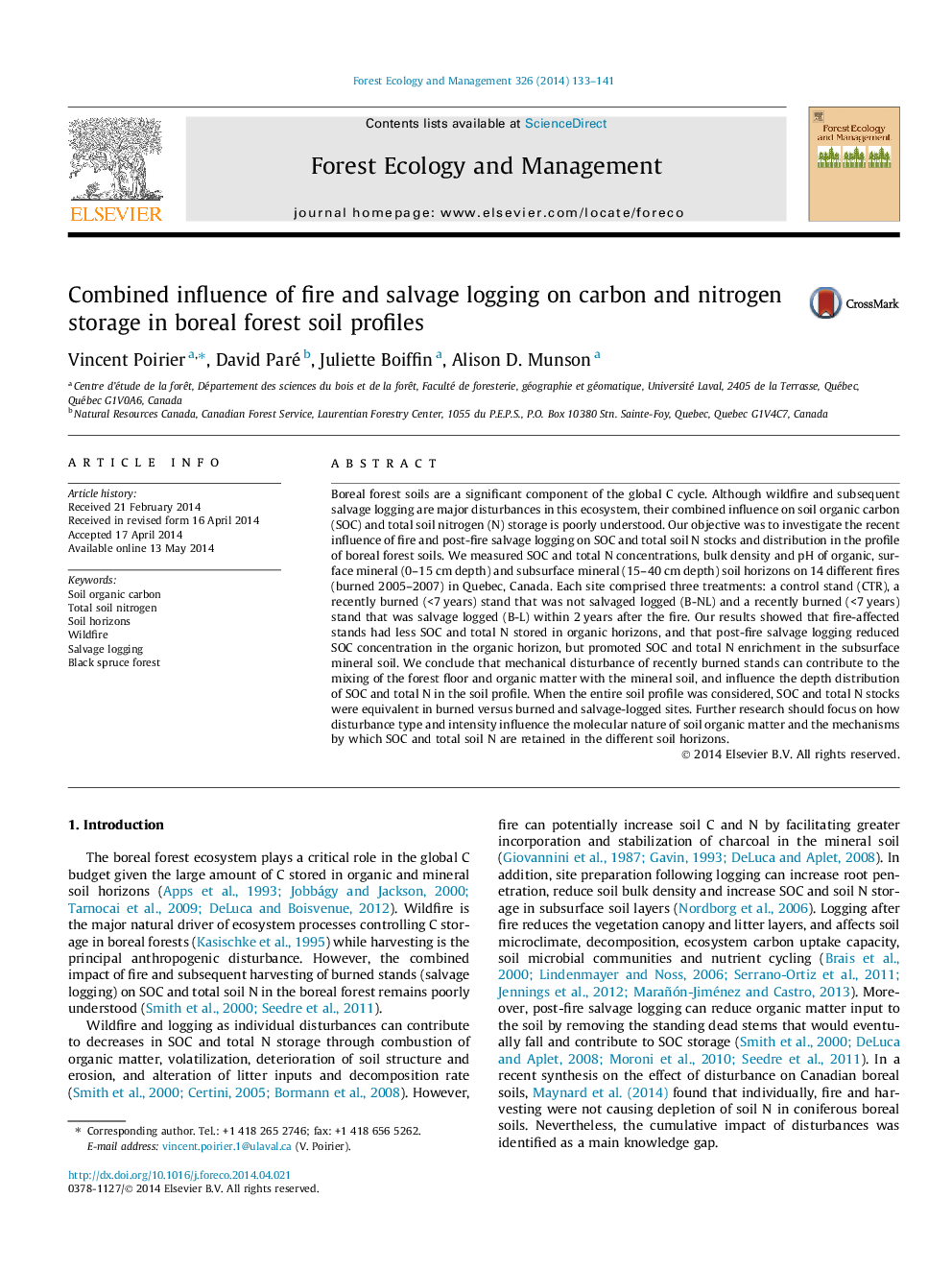| Article ID | Journal | Published Year | Pages | File Type |
|---|---|---|---|---|
| 6543536 | Forest Ecology and Management | 2014 | 9 Pages |
Abstract
Boreal forest soils are a significant component of the global C cycle. Although wildfire and subsequent salvage logging are major disturbances in this ecosystem, their combined influence on soil organic carbon (SOC) and total soil nitrogen (N) storage is poorly understood. Our objective was to investigate the recent influence of fire and post-fire salvage logging on SOC and total soil N stocks and distribution in the profile of boreal forest soils. We measured SOC and total N concentrations, bulk density and pH of organic, surface mineral (0-15Â cm depth) and subsurface mineral (15-40Â cm depth) soil horizons on 14 different fires (burned 2005-2007) in Quebec, Canada. Each site comprised three treatments: a control stand (CTR), a recently burned (<7Â years) stand that was not salvaged logged (B-NL) and a recently burned (<7Â years) stand that was salvage logged (B-L) within 2Â years after the fire. Our results showed that fire-affected stands had less SOC and total N stored in organic horizons, and that post-fire salvage logging reduced SOC concentration in the organic horizon, but promoted SOC and total N enrichment in the subsurface mineral soil. We conclude that mechanical disturbance of recently burned stands can contribute to the mixing of the forest floor and organic matter with the mineral soil, and influence the depth distribution of SOC and total N in the soil profile. When the entire soil profile was considered, SOC and total N stocks were equivalent in burned versus burned and salvage-logged sites. Further research should focus on how disturbance type and intensity influence the molecular nature of soil organic matter and the mechanisms by which SOC and total soil N are retained in the different soil horizons.
Related Topics
Life Sciences
Agricultural and Biological Sciences
Ecology, Evolution, Behavior and Systematics
Authors
Vincent Poirier, David Paré, Juliette Boiffin, Alison D. Munson,
